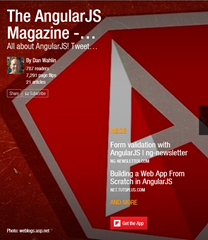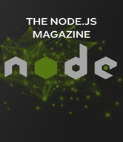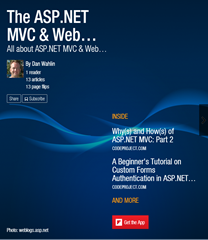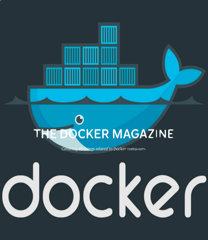I’m excited to announce the release of a new course on Pluralsight titled Integrating Angular with Node.js RESTful Services! This covers Node.js 6.10 or higher and Angular 4 or higher.
In this course I’ll walk you through the process of using Angular to call into RESTful services and perform CRUD (Create, Read, Update and Delete) operations in an application to allow a user to view and modify data. If you’ve wondered about how Angular services work, how to organize modules, the role of Observables and RxJS in async operations, how Angular’s Http client can be used to make async calls, how to create and validate Angular forms, how to work with headers and page data, techniques for preventing CSRF attacks or simply what’s involved with creating a RESTful service, then this course will provide the information you need to get started. Node.js and Express are used along with MongoDB on the server-side. However, the Angular concepts covered throughout the course can be used to call any RESTful service regardless of technology
So what’s in the course? Here’s a synopsis of the key topics as well as the course modules. If you’re a Pluralsight subscriber I really hope you enjoy the course. I had a lot of fun putting it together and filming it!
Integrating Angular with Node.js RESTful Services
Learn how to build an Angular and Node.js application that can perform create, read, update and delete (CRUD) operations. Topics covered include building RESTful services with Node.js and Express, manipulating data in MongoDB and consuming services with Angular (note that Angular 2 or higher is covered and that TypeScript is used).
Key Angular Topics Covered:
- TypeScript and how it can be used in Angular applications
- Code organization with Angular modules
- The role of ES2015 module loaders in Angular applications
- Promises versus Observables
- Learn how Observables work (a nice visual explanation is shown) and how to subscribe to them
- Learn how to create and use Angular services
- Angular’s Http client and how it can be used to call into RESTful services
- Differences between Template-driven and Reactive forms in Angular
- Directives used in Template-driven forms and how to use them for two-way data binding
- Directives and code used in Reactive forms
- Form validation techniques and custom validators
- How to build custom components and leverage Input and Output properties
- Working with headers sent by the server
- Building a custom pagination component
- CSRF attacks and how Angular can help
Key Node.js Topics Covered:
- Understand GET, POST, PUT and DELETE and the role each plays with RESTful services
- ES2015 features and how they can help organize code in Node.js applications
- Create RESTful services capable of supporting CRUD operations using Node.js and Express
- Use Mongoose to connect Express to MongoDB
- Load Express routes dynamically (convention or configuration technique)
- Paging data
- Working with headers
- Preventing CSRF attacks
Course Modules:
- Course Introduction
- Pre-requisites to Maximize Learning
- Learning Goals
- Server-side Technologies and Concepts
- Client-side Technologies and Concepts
- Running the Application
- Running the Application with Docker
- Exploring the Node.js and Angular Application
- Exploring the Project Structure
- Application Modules
- Configuring Node.js Routes
- Configuring the ES Module Loader
- Angular Modules, Components and Services
- Retrieving Data Using a GET Action
- Creating a GET Action to Return Multiple Customers
- Creating a GET Action to Return a Single Customer
- Making GET Requests with an Angular Service
- Displaying Customers in a Grid
- Displaying a Customer in a Form
- Converting to a ‘Reactive’ Form
- Inserting Data Using a POST Action
- Creating a POST Action to Insert a Customer
- Making a POST Request with an Angular Service
- Modifying the Customer Form to Support Inserts
- Exploring the ‘Reactive’ Form
- Updating Data Using a PUT Action
- Creating a PUT Action to Update a Customer
- Making a PUT Request with an Angular Service
- Modifying the Customer Form to Support Updates
- Exploring the ‘Reactive’ Form
- Deleting Data Using a DELETE Action
- Creating a DELETE Action to Delete a Customer
- Making a DELETE Request with an Angular Service
- Modifying the Customer Form to Support Deletes
- Exploring the ‘Reactive’ Form
- Data Paging, HTTP Headers and CSRF
- Adding a Paging Header to a RESTful Service Response
- Accessing Headers and Data in an Angular Service
- Adding Paging Support to a Component
- Adding a Paging Component
- CSRF Overview
- Adding CSRF Functionality with csurf
- Using a csurf Token in an Angular Service







